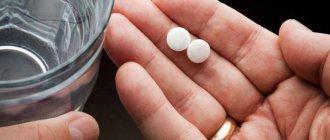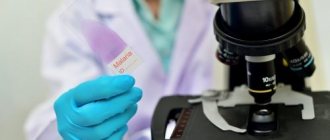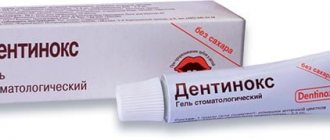All articles
Instructions for use and information on the medication packaging
17.06.2015
Each drug undergoes a series of laboratory and clinical tests, the purpose of which is to show its effectiveness and safety, as well as to identify possible undesirable effects. We tell you what the difference is between prescription and over-the-counter drugs, what you need to know about the instructions for use, and why drugs with the same active ingredient may have different names and prices.
Prescription and over-the-counter medications
Medicines are divided into prescription drugs and drugs approved for sale without a doctor's prescription. As a rule, prescription drugs include potent drugs, medications that require strict monitoring by the attending physician. Over-the-counter medications, such as those to relieve headaches or fever or cold symptoms, can be purchased at a pharmacy and used for self-medication without requiring a prescription. Nevertheless, it is important to carefully read the instructions before use; some of its points are especially important for the patient.
Indications for use
It has antiemetic, sedative and antitussive effects. The reaction to external stimuli decreases, as does psychomotor agitation, affective tension, the feeling of fear is suppressed, and a weakening of aggressiveness is noted. Teraligen is used as a sleeping pill, but in a general sense it is not. Neuroleptics simply induce drowsiness and speed up the onset of sleep. And this must be taken into account in certain specialties.
Teraligen may induce drowsiness and accelerate the onset of sleep
That is, the pharmacological use of Teraligen is quite wide. The medicine is available in the form of dark pink, film-coated tablets. It contains 5 mg of alimemazine tartrate.
Teraligen is effective for neurotic disorders due to trauma, intoxication, vascular disorders in combination with autonomic disorders, anxiety and mild depressive disorders.
This medicine is used to treat the following diseases:
- somatized mental disorders;
- states of excitement and anxiety against the background of somatic pathologies;
- sleep disorders of various origins;
The drug is used to treat mental disorders and depression
- psychopathy with asthenic and psychoasthenic disorders;
- anxiety-depressive conditions within the framework of borderline endogenous and vascular diseases;
- senestopathic depression;
- allergic reactions (symptomatic treatment);
- neuroses and neurosis-like conditions of endogenous and organic origin with a predominance of senestopathic, hypochondriacal, phobic and psychovegetative disorders.
How to read the instructions
Each medicine comes with instructions in Russian; at first glance it may seem that the information in it is intended for specialists, but this is only partly true. The instructions consist of several sections and are intended for use by both the doctor and the patient.
First, you need to check that the name of the drug on the package matches the name in the instructions. Then move on to sections that are especially important to the patient.
Indications for use
Your disease or condition must be among those listed in this section. Otherwise, you should ask your doctor why you need this particular medicine.
Contraindications
All conditions are presented here: allergies, intolerances, concomitant diseases in which taking the drug is impossible or requires special caution or use under the supervision of a doctor.
Use during pregnancy and breastfeeding
Pregnant women and nursing mothers may need to take medications. However, some medications are prohibited for use during pregnancy; the use of others may require a temporary transition to artificial feeding. The active ingredients of certain drugs, along with nicotine and ethyl alcohol, which is contained in alcoholic beverages, can penetrate the hematoplacental barrier that separates the organisms of mother and child. Therefore, it is important to remember that even over-the-counter medications and dietary supplements cannot be taken without consulting your doctor or gynecologist. The doctor will help you choose the safest medicine that will not affect the child’s health and give recommendations on feeding.
Directions for use and doses
Read this section carefully to understand exactly how to use a particular medicine - internally or externally, after meals or on an empty stomach, chew or swallow whole. Check to see if your dose exceeds the daily dose, and if so, be sure to consult your doctor.
Side effect
Do not be alarmed by information about side effects, much less decide on your own to reduce the dose or discontinue the medication. The safety of each medicine is carefully checked. The instructions list all the adverse events that occurred while taking this drug, even if the side effect occurred in one patient out of a million. This does not mean that you will have a similar reaction, but you should still study the list in order to consult a doctor in time if adverse events occur. To reduce the risk of their occurrence, follow the instructions for use and follow the doctor’s recommendations.
Storage conditions
Medicines, like food, tend to spoil. If stored incorrectly, the effectiveness of the drug can be significantly reduced, and its use can cause more harm than good. The rules for storing the medicine are indicated in the instructions and on the packaging.
Combination of several drugs
If the doctor prescribes several medications, they are taken separately. Because the:
- their combined use puts a greater burden on the liver and gastrointestinal tract;
- under the influence of the individual environment of the stomach, several medications taken simultaneously can cause the formation of toxic agents in the stomach;
- Several medications taken at the same time can affect each other, resulting in changes in their effect on the body.
Taking medications should be spaced out so that the interval between doses is at least 15-30 minutes.
What does the packaging say?
On the packaging you will find the most important information about the medicine.
- Trade and international name of the drug.
The trade, brand name is printed in large letters, the international name - the name of the active substance, the active ingredient - in a smaller font. Drugs with the same international name may be sold under different brand names, and the price will vary. - Amount of active substance.
For example, 1 ml of Omnitus syrup contains 0.8 mg butamirate citrate. - Method of administration
. For example: “For oral administration.” - Quantity and dosage form.
For example: 20 tablets. - Expiration date, storage conditions.
For example: 5 years. Do not use after the expiration date stated on the package. - Series number and name of the manufacturing company
Side effects
Judging by the clinical data, patients taking Teraligen tablets tolerate the drug well. Therefore, the occurrence of side effects is rare. But if they do exist, then the list of side effects is as follows:
- From the genitourinary system: urinary retention, bladder atony.
- From the respiratory system: increased viscosity of bronchial secretions, dryness of the mucous membrane of the nose and pharynx.
- Allergic reactions: urticaria, photosensitivity, allergic dermatitis, Quincke's edema.
- Laboratory indicators: false positive pregnancy test result.
- From the senses: decreased visual acuity, ringing and tinnitus. From the blood vessels and heart: arterial hypotension, cardiac arrhythmia, dizziness.
- From the digestive tract: dry mouth, intestinal atony, anorexia, constipation.
- From the nervous system: asthenia, drowsiness, fatigue, paradoxical reactions (including anxiety, nightmares, irritability and agitation), confusion. In addition, it is possible to develop increased frequency of sleep apnea, increased seizure activity, as well as extrapyramidal disorders (including akathisia, hypokinesia and tremor).
- Others: increased sweating, decreased bone marrow function, muscle relaxation.
In addition, alimemazine can distort the results of skin prick tests for various allergens. Therefore, if you are having an allergy test, you should stop taking the drug no later than 72 hours in advance.
pharmachologic effect
The drug is a derivative of phenylethylamine and gamma-aminobutyric acid (GABA) of the phenyl type, due to which it reduces the level of tension, fear, anxiety, has an anxiolytic effect, and relieves insomnia. When taken simultaneously with sleeping pills, neuroleptics and narcotic drugs, the effect of the latter is enhanced.
What is Phenibut?
Phenibut is a nootropic psychostimulant that inhibits neurotransmitters of the central nervous system. The active substance has a crystalline structure and a sour taste. To make tablets, a white powdery mass is used, soluble in alcohol and water. pH values in an aqueous solution correspond to the norm of 2.3-2.7.
Pharmacodynamics
The nootropic affects the integrative higher functionality of the brain, stimulating mental activity, memory and other abilities. Increases brain stability under increased loads, stressful situations and hypoxia (oxygen starvation). Has the following effect on the body:
- Strengthens cortico-subcortical connections (elements connecting the cortex with the subcortical sections).
- Normalizes tissue metabolism, accelerates blood supply, which improves brain functionality.
- Reduces blood vessel resistance.
- Has antiplatelet properties.
- Has an anticonvulsant effect.
- Increases the latent period. This reduces nystagmus.
- Reduces asthenia, relieves vasovegetative symptoms.
- Reduces the excitability of subcortical elements, thalamus, hypothalamus, limbic complex.
- Accelerates the transmission of nerve impulses.
- Delays induced and spontaneous platelet aggregation, thereby preventing the development of thrombosis.
- Increases the number of mitochondria in the affected area during traumatic brain injury, where perifocal changes occur.
- Utilizes excess glucose.
- Launches energy processes.
- Improves tissue respiration.
Achieved effect:
- the accuracy of the sensory-motor reaction is stabilized;
- memory is restored;
- concentration improves;
- mental capacity increases;
- performance increases during the daytime;
- insomnia disappears at night;
- anxiety and restlessness are reduced;
- pain in the head and feeling of heaviness are relieved;
- irritability disappears (sedative effect);
- emotional lability increases;
- clarity of consciousness appears.
The drug does not have a negative effect on adrenergic and cholinergic receptors, does not depress the central nervous system, does not relax muscles, and therefore can be used even in old age. Positive dynamics are observed after long-term use, as the effect develops gradually.
Pharmacokinetics
After penetration into the body, the active substance is quickly absorbed, evenly distributed throughout the tissues (0.1% is concentrated in the brain), and the younger the patient, the higher these indicators. Easily overcomes the BBB (blood-brain barrier between the central nervous and circulatory systems). Metabolization in the liver ranges from 80 to 95 percent, metabolites are not activated.
Cumulation does not occur, the active substance is excreted by 5% through the kidneys in an unchanged state, some of it is excreted through bile. The onset of elimination is noted after 3 hours, but the substance acts in the brain for 6 hours.
Interaction
To apply the method of mutual potentiation, Phenibut is combined with other psychotropic drugs. To do this, the dosage of all drugs that are taken at the same time is reduced. Phenibut interacts well with antiparkinsonian medications, antiepileptic groups, anticonvulsants and antipsychotic drugs. Can be used along with sleeping pills and narcotic analgesics. This approach makes it possible to enhance the degree of impact of different groups of drugs, increasing the duration of action.
Compatibility of Phenibut and Phenazepam
Both drugs easily interact with each other, as they are psychotropic. Unlike Phenibut, Phenazepam is based on bromodihydrochlorophenylbenzodiazepine. In simple terms, the drug belongs to another group of psychotropics - benzodiazeline, and therefore affects the muscular and central nervous system. When they are compatible, the effectiveness of both drugs increases. It is allowed to take together and sequentially. The introduction of one of the drugs into the course of treatment is carried out gradually.
Compatibility of Phenibut and Mexidol
These are completely different drugs. Phenibut helps stimulate cognitive abilities, improve memory and brain functionality. Additionally, it has a sedative effect. Mexidol is an antioxidant that reduces the concentration of free radicals that destroy brain cells. It is used for alcohol poisoning, stress, convulsions, and nervous excitement. Therefore, both remedies are aimed at calming the nervous system. By affecting the brain differently, they enhance each other's effects. This can lead to increased lethargy and drowsiness, so during treatment it is not recommended to drive or operate a machine (due to slower reactions).
Compatibility of Phenibut and Atarax
Atarax and Phenibut belong to the anti-anxiety group, but affect the nervous system differently. The first drug eliminates alcohol syndrome, nervous overexcitation, and irritability. The second remedy fights insomnia, improves mental activity, and has a psychostimulating effect. Combining these medications gives powerful positive dynamics, so they can be prescribed simultaneously.
Compatibility of Phenibut and Fluoxetine
Fluoxetine is intended to suppress depression. The mechanism is based on an increase in the amount of serotonin in parts of the brain. This substance is responsible for a person’s mood and mental state. Phenibut is not an antidepressant, but has a calming effect on the brain, stabilizing the emotional background. Fluoxetine often causes side effects such as dizziness, insomnia, and irritability. To prevent their manifestation, Phenibut is prescribed. In addition, the nootropic enhances the effect of the antidepressant. The peculiarity is that when used together, the dosage is not reduced.
Compatibility of Phenibut and Glycine
Glycine contains an active ingredient - the amino acid glycine, which has the most gentle effect on the body. Due to this, it is often prescribed in childhood. Glycine is produced by the human body, is responsible for activating processes in the nervous system, and is a neurotransmitter. Aminophenylbutyric acid from Phenibut interacts well with glycine - the effect of the 2 drugs is enhanced. There are no adverse reactions.
Manufacturer
Phenibut is produced in 3 countries by the following pharmaceutical companies:
- Russia: Ozon LLC, Organika OJSC, Moscow Endocrine Federal State Unitary Enterprise, Usolye-Sibirsky Chemical Physics Complex.
- Latvia: JSC "Olainfarm" (Olainfarm).
- Belarus: Belmedpreparaty.
The prescription of the drug Phenibut is carried out by the treating specialist after a comprehensive examination of the patient. Only the doctor determines the dosage and duration of the course based on the results of diagnostic measures. During the therapeutic course, the patient's condition is monitored. Self-medication is strictly prohibited, as life-threatening consequences may occur.
Overdose
Exceeding the dose prescribed by the doctor also leads to the development of adverse reactions, which are especially severe. In addition, the following conditions may occur:
- a sharp drop in blood pressure;
- fainting;
- nausea and vomiting;
- renal failure;
- eosinophilia;
- hepatic fatty degeneration;
- kidney dysfunction.
In case of overdose, first aid must be provided. To do this, gastric lavage is performed:
- prepare table water in the amount of a liter;
- give the patient a drink in one gulp;
- cause a gag reflex;
- wait a few minutes, then repeat the procedure 2-3 more times.
Flushing is carried out immediately after dosing or the appearance of the first unpleasant symptoms. Next, you need to take absorbents - activated carbon. Toxins and the active substance are absorbed into the drug, then everything is excreted through feces.
Phenibut does not have an antidote. The drug has a low-level toxic compound, so the hepatotoxic effect occurs mainly after long-term use of excessive dosages. This leads to an increase in the concentration of eosinophils in the blood fluid of peripheral vessels. In addition, large amounts of triglycerides accumulate in the liver. It is these factors that contribute to the development of the above diseases.




